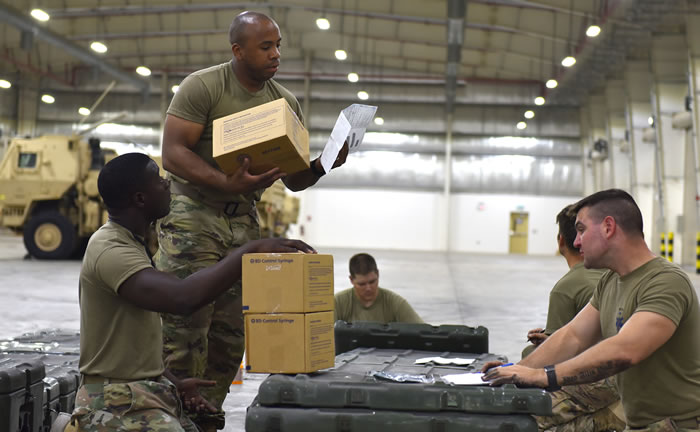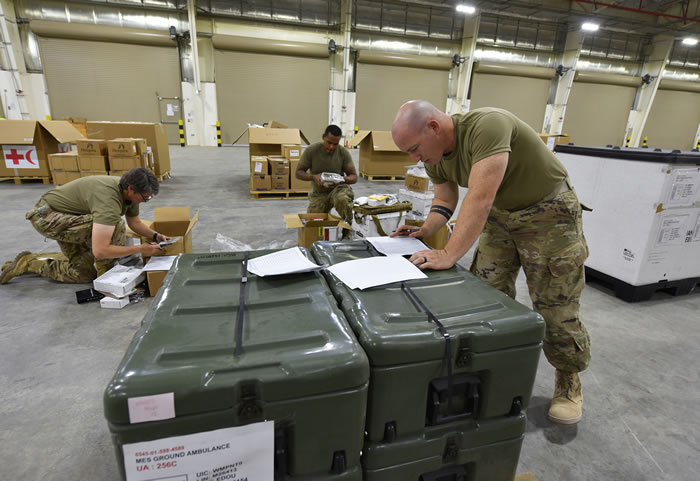Army Tests Readiness of Medical Prepositioned Stocks

Putting readiness to the test, members of the U.S. Army Medical Materiel Agency exercised their ability to rapidly issue Army Prepositioned Stock (APS) medical materiel in both Korea and South West Asia, May – July 2018.
Leveraging APS-4 in Korea, a 10-person USAMMA Medical Logistics Support Team (MLST) conducted an exercise with strategic partners to demonstrate their capability to quickly issue an Early Entry Hospital Element. Additionally, an 11-person MLST tested medical APS-5 in South West Asia by a conducting a "real world" handoff of more than $6.3 million in medical equipment and assemblages to the 155th Armored Brigade Combat Team (ABCT). Both fielding missions validated USAMMA's ability to equip units in less than 96 hours using medical APS; however, preparation remains key.
"These missions were an opportunity to test our timelines and assess our set configuration process," said MLST – Korea Mission Commander Maj. Daniel O'Neill. "The overwhelming feedback we received from the units was that the way we issue our APS, by set configuration, exceeds their expectations and expedites the joint inventory process."
Set configuration is a process by which the team organizes stocks based on their Medical Materiel Set or Medical Equipment Set. For example, supplies for a ground ambulance set are placed together. Temperature-sensitive medical products, hazardous material, controlled substances, and equipment that requires routine maintenance are stored separately based on storage requirements.

"All the stuff was really well laid out. Everyone has been accommodating," Capt. Thomas Roberson, Company Commander of the Headquarters Company, 150th Brigade Engineer Battalion, 155th ABCT. "I've got Soldiers that have zero experience with both inventory and medical equipment, and they seem to be adapting and drawing the stuff without any problem."
For each unit receiving medical APS, set configuration gives them assurance that everything they need to be fully mission-capable is included and ready to go.
"It's almost like jumping into a brand new car," said MLST – South West Asia Mission Commander Capt. Bryan Pamintuan. "All you have to do is turn the key."
Korea and South West Asia are two of more than a handful of locations worldwide where APS are stored, both on land and at sea. USAMMA, a subordinate organization of the U.S. Army Medical Research and Materiel Command, centrally manages medical APS on behalf of the Department of the Army, which is the releasing authority for APS.
Units must receive release approval for APS from the Department of Army, through their chain of command. After approval, they can coordinate directly with USAMMA. However, Pamintuan advises that units keep their medical materiel ready."They cannot depend solely on the chance that they will be aligned to an APS. There is only so much contingency stock to go around," said Pamintuan. "Readiness is the priority for every unit."














